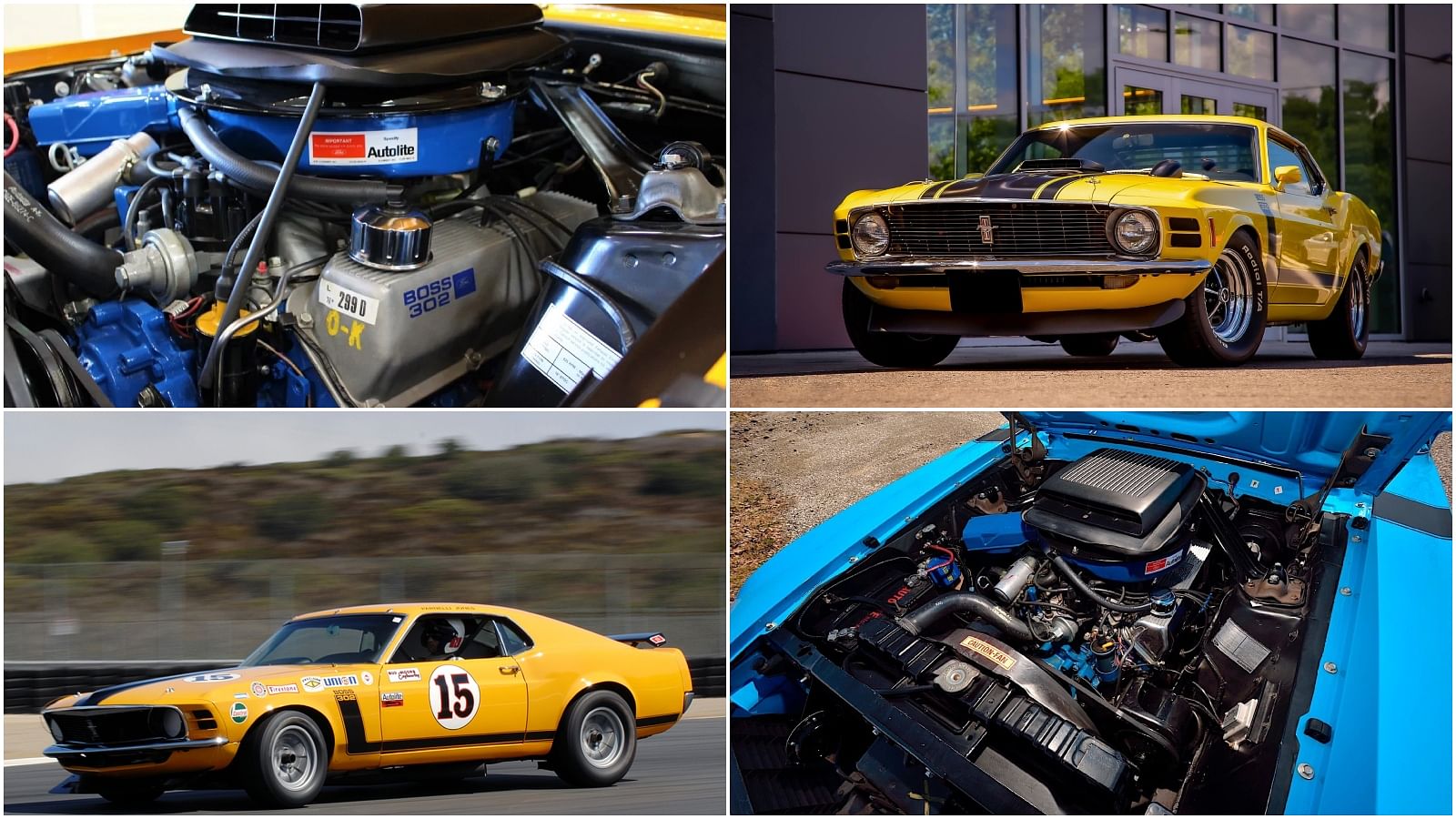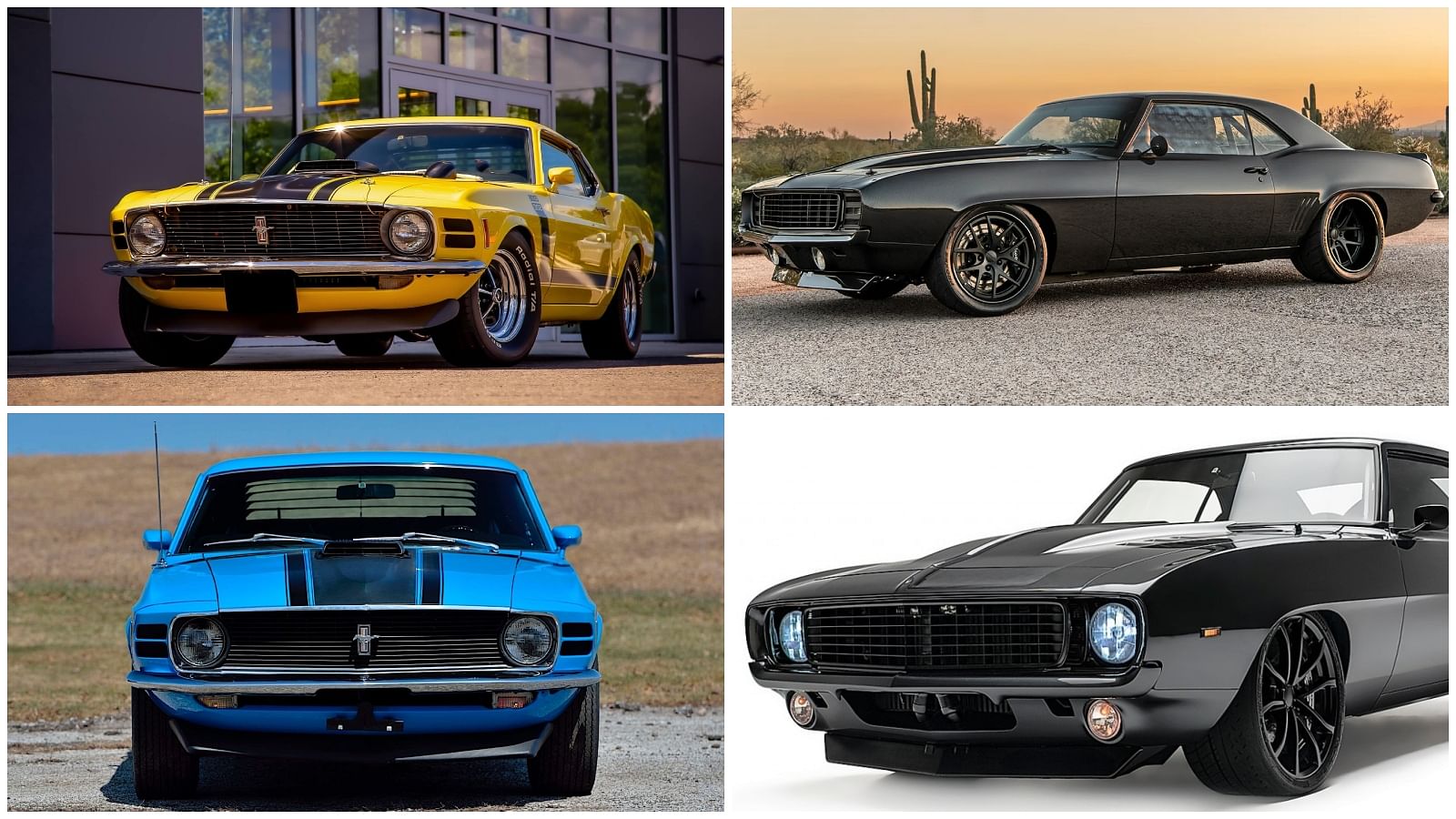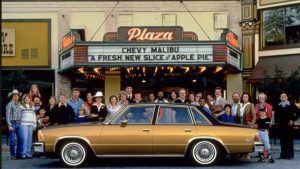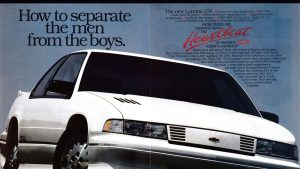
The 1970 Ford Boss 302 Mustang showed the world the way of the muscle car. It had a powerful engine mounted on a sturdy body that gave the driver the ability to fly. The Boss 302 was introduced as a faster version of the already existing Ford Mustang. The Ford Mustang in itself was a huge hit among the people. The Boss 302 being a more powerful version of the original Mustang was greeted with open arms by the buyers. While the interiors of the Boss 302 was very nicely finished and gave quite an exciting feel, the real treat lay under the hood in the form of a big 5.0L V8 engine mated with a 4 speed manual transmission churning out 290-horsepower and 290 lb-ft of torque, which meant that when you put your foot down, the Boss 302 absolutely flew.
The Boss 302 “Hi-po” engine was made in 1968 by the Supercar Club of America (SCCA), Trans American racing series. The same engine was later put into the production version of the Boss 302. The car could go from 0 to 60 in 6.9 seconds and could complete a quarter mile in 14.6 seconds. The Boss 302 had a top speed of 137 MPH. The Boss 429 was the more powerful version of the Boss 302.

The History of Boss 302
The Boss 302 Mustang was introduced in response to Chevrolets V8 Camaro that was taking over the Pony Market segment with its more powerful engine. The rivalry between Camaro and Mustang started after Ford introduced the Mustang making Chevrolet realize that they had no competition in the pony car segment. In the late 1960s when Chevrolet introduced the more powerful Camaro, it became an instant hit snatching away the top position of the pony car market. In response to this Ford introduced the more powerful Boss 302 V8 engine thereby snatching back the position of the king of the muscle cars.

The 1970 Boss 302 Mustang was based on the 1969 Boss 302 which was designed by Larry Shinoda. Larry Shinoda was an ex employee of GMC’s Chevrolet division, who also designed the Mustang Mach 1, the C2 Corvette Stingray, and the Camaro Z28. He was brought to Ford by the then boss of Ford, Semon Knudson. The designing and making of the Boss 302 was a secret project between Shinoda and Knudson. They wanted to build a car that could put the Camaro back in its place. The car was named Boss 302 because 302 referred to the engine – 302 cubic inches of displacement (5.0 liter)- and the Boss was Larry Shinoda’s was of paying homage to his boss Semon Knudson because the making of the Boss 302 was a secret only between the two of them, so whenever someone would ask Larry Shinoda what project he was working on, he would reply by saying, “The boss’s car”.
Boss 302 in Motorsports

The Boss 302 was part of Ford’s attempt at winning the coveted SCCA (Supercar Club of America) trophy in the Trans- Am races. The victory would also mean the defeat of their long standing rival, the Chevrolet Camaro. Ford entered the Boss 302 for the 1969 and 1970 Trans- Am races. In 1969, Ford lost the race due to two major factors,tyre problems, and slow pit stops. Conversely, thanks to Roger Penske, the Team Principal of Chevrolet, the pit stops were carried out in the shortest possible time and the strategy he made was organized to perfection. This gave the win to Chevrolet. However, in 1970, with better Goodyear tyres and Bud Moore as the team Principal, the Boss 302s cruised to a world championship in the Trans- Am racing series.
The Boss 302 has also raced in the Australian Touring Car series from 1969 to 1972. The Boss 302 was gifted to Canadian racing driver Allan Moffat who raced his Boss 302 to 101 wins. The Boss 302 finished 6th in 1970, 2nd in 1971 and 3rd in 1972, in the Australian Touring Car Series. Allan Moffat even described the 302 as his favorite racing car.
Final Thoughts
The 1970 Ford Boss 302 is one of the most iconic muscle cars of all time. It did not differ very much from the 1969 Boss 302 other than the fact that in the 1970 variant two of the 4 headlights were removed and replaced with engine vents. The side hockey stick stripe is a signature style of the 1970 Boss 302 Mustang. The 1970 Boss 302 was built on determination and dreams. In the process of trying to be the best, it not only won the Trans Am series but also the hearts of the people. With a starting price of a little over $3,000, it was not the cheapest car in the market, but it was cheaper than most other performance cars. The Boss 302 became a veteran of the American muscle cars, and with good reason. The powerful and loud V8 engine, and the sporty aggressive look, with its comfortable interior and low ride height, the ride not only became exciting but also made the person driving the Boss 302 feel special. And a car that makes the driver feel special, is a car that is immortalized and lives on from generation to generation.







